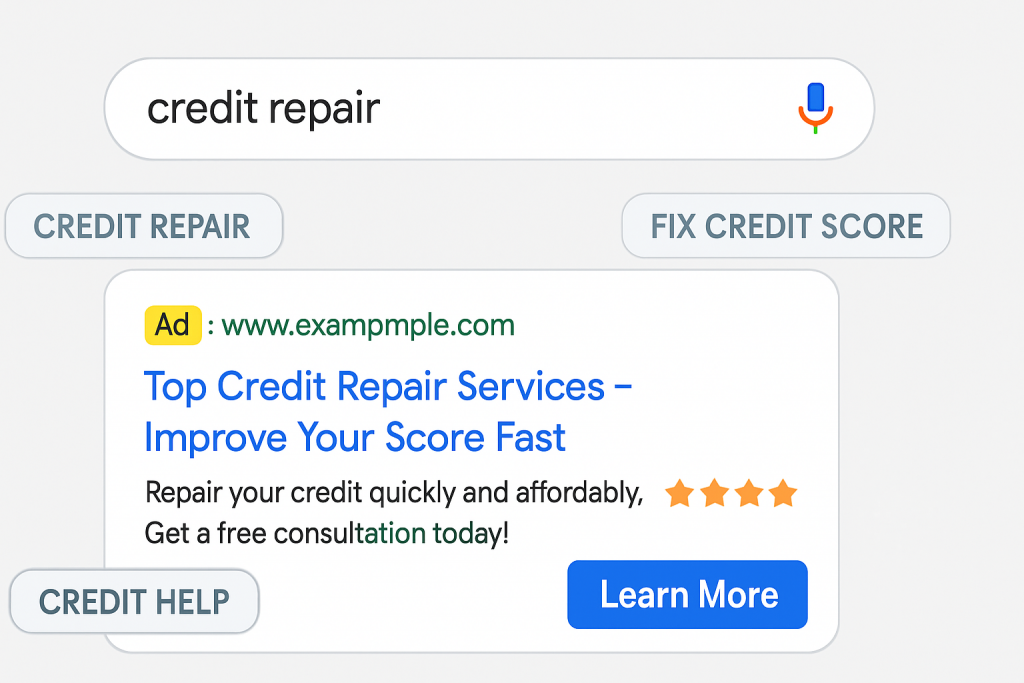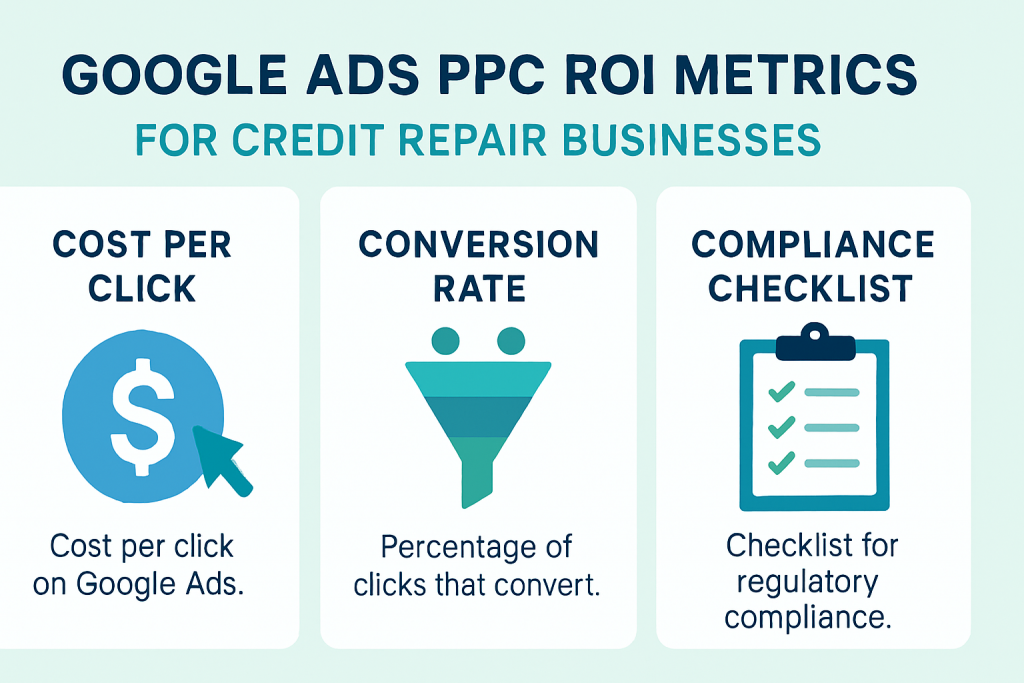Why do some credit repair companies generate hundreds of qualified leads monthly while others struggle to get even basic visibility online?
The answer lies in understanding how Google Ads can work within the current regulatory framework.
Google Ads’ effectiveness in credit repair lead generation depends on navigating restrictions while leveraging high-intent search behavior and alternative marketing strategies.
This article highlights the key success factors that separate thriving credit repair businesses from those that barely break even.
Google implemented a complete ban on credit repair advertising in November 2019. This policy change eliminated direct advertising for credit repair services across the platform. The ban was implemented to protect consumers from fraudulent practices that had become common in the industry.
Why Google banned credit repair ads:
The market responded by shifting strategies entirely. Credit repair companies moved their advertising budgets to SEO, social media platforms, and alternative advertising networks. Many businesses struggled to maintain their lead generation volume after losing access to Google’s massive search audience.
However, smart companies discovered alternative approaches. They began promoting related services that comply with Google’s policies:

Credit repair prospects search with immediate financial needs. These searches happen when people face urgent situations like loan rejections or mortgage denials. Understanding this behavior helps companies position their alternative services effectively.
Common search patterns include:
Search intent varies significantly across different stages. Awareness-stage searchers look for educational content about credit scores. Decision-ready prospects search for specific solutions to immediate credit problems. Geographic targeting works particularly well because credit repair services often operate locally and face different state regulations.
The urgency factor makes these searches valuable. People don’t casually research credit repair, they search when they need results quickly. This creates opportunities for companies offering compliant alternative services.
Smart credit repair companies have developed compliant approaches that generate qualified leads without violating Google’s policies.
Effective alternative strategies:
Keyword targeting approaches:
Location-based targeting proves especially effective. Local searches for financial services have high conversion rates because people prefer working with nearby providers. Companies can target specific metropolitan areas where their services operate legally.
Content marketing through Google Ads works well, too. Educational videos, financial guides, and credit score explanations attract prospects while building trust. These campaigns cost less per click than direct service advertising and provide better long-term value.

Understanding the financial metrics helps companies make smart advertising investments. The financial services industry has some of the highest cost-per-click rates on Google Ads.
Campaign Type | Average CPC | Conversion Rate | Lead Quality |
Credit Education | $8-15 | 12-18% | Medium |
Free Consultation | $15-25 | 8-12% | High |
Debt Management | $20-35 | 6-10% | Very High |
Credit Monitoring | $5-12 | 15-22% | Low-Medium |
Lead qualification significantly impacts conversion rates. Unqualified leads cost money without generating revenue. Companies need systems to identify serious prospects quickly.
Customer lifetime value considerations:
Budget allocation requires careful planning. Most successful companies spend 60% on high-intent keywords and 40% on educational content campaigns. This balance generates immediate leads while building long-term brand awareness.
Measuring true ROI goes beyond initial lead costs. Companies must track:
Financial services face strict advertising regulations. Credit repair companies must navigate federal and state requirements while staying compliant with Google’s policies.
Key compliance requirements:
Ad copy restrictions are extensive. Companies cannot make guarantees about credit score improvements or promise specific results. They cannot claim to remove accurate negative information or suggest illegal practices.
Landing page compliance essentials:
Documentation becomes critical for audits. Companies need records of:
Effective targeting reaches people with genuine credit repair needs while avoiding unqualified clicks that waste budget.
Demographic targeting strategies:
Behavioral signals for financial stress:
Remarketing campaigns work exceptionally well for financial services. People research credit repair extensively before making decisions. Companies can show targeted ads to previous website visitors with educational content or consultation offers.
Lookalike audience development:
Exclusion strategies prevent wasted spending:
Trust-building elements are essential in credit repair advertising. People have concerns about scams and ineffective services in this industry.
Effective ad copy elements:
Mobile-first considerations:
Video content builds credibility effectively. Short educational videos about credit scores, financial planning, or debt management establish expertise while attracting prospects. These videos cost less to promote than traditional ads and generate higher engagement rates.
Call-to-action optimization:
Google Ads’ effectiveness for credit repair lead generation depends on working within current restrictions while leveraging alternative approaches. Companies that succeed focus on education, consultation offers, and compliant service promotion rather than direct credit repair advertising.
The key success factors include understanding high-intent search behavior, implementing compliant alternative strategies, managing costs effectively, maintaining strict compliance standards, optimizing targeting and audiences, and creating trust-building creative content.
Implementation steps:
Integration with proper attribution and optimization tools helps companies measure true ROI and scale successful campaigns. The credit repair industry faces unique challenges, but companies that adapt their strategies can still generate substantial qualified leads through Google Ads while maintaining full compliance with all applicable regulations.
Google Ads’ effectiveness for credit repair lead generation requires balancing compliance with smart targeting and compelling creative. While direct credit repair ads face bans, businesses succeeding with Google Ads focus on supporting products and services, laser-focused audience segmentation, and data-driven optimization.
Integrating Google Ads performance data with CausalFunnel’s AI attribution and optimization platform can help credit repair marketers unlock hidden ROI and consistently convert high-quality leads.
Empowering businesses to optimize their conversion funnels with AI-driven insights and automation. Turn traffic into sales with our advanced attribution platform.



